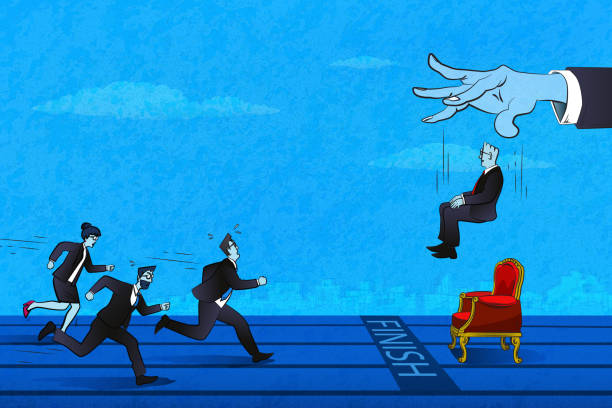
The downfall of Sri Lanka’s Rajapaksa clan: A genesis of cronyism and nepotism
By Prof Ramasamy Palanisamy

WHATEVER happened to the tear-drop island state of Sri Lanka?
Once described as a successful multi-ethnic model of development, Sri Lanka’s governance and economy seem to be in tatters.
Whatever happened to the powerful oligarchy of the Rajapaksa clan? All the ministers except the president Gotabaya have resigned.
The genesis of cronyism and nepotism started way back in the 1970s, long before the Rajapaksa clan appeared on the scene.
A well-known international magazine once said that “family planning” was nowhere more complete than Sri Lanka. Imagine, this was before the rise of the Rajapaksa family.
Cronyism and nepotism became much worse under the Rajapaksa family.
With the rise of the Rajapaksa family which led to the presidency of Mahinda and the instalment of his brother Gotabaya as the defence secretary, Basil as the finance minister and not to mention other family members in high government positions, the stage was set for the country’s political and economic doom.
Before the Rajapaksa family could extend their tentacles far and wide, the civil war had to be prosecuted against the Liberation Tigers of Tamil Eelam (LTTE), the Tamil national liberation organisation.
The more than three decades of war was brought to a close in 2009 with the defeat of the LTTE and the death of more than one hundred thousand people, mainly Tamils in their traditional homeland of the north and east of the country.
Mind you the LTTE was defeated not by the sole efforts of the Sri Lankan government but with the assistance of 20 countries including India.
The defeat of the LTTE was largely credited to the family of Rajapaksa, particularly the brothers, Mahinda and Gotabaya.
The family soon became pride of the Sinhala-Buddhist nation of Sri Lanka. In other words, they became untouchable.
By equating the Tamil population with the LTTE, the former became the target of the religious and racial extremism of the government.
Tamil lands in the north and east were occupied by the armed forces and their traditional livelihood such as agriculture and fishing were affected.
International calls for the prosecution of war crime against individuals who managed the war went unnoticed by the jingoistic government.
The Rajapaksa family was so emboldened by the victory – not so much against the LTTE but against the ethnic minority Tamils.
Essentially, it was war by the majority against the minority.
It was not that other minorities such as Muslims were spared the wrath of the Sinhala-Buddhist hegemony.
Having taken care of the Tamil minority problem, the Rajapaksa family turned to the governance of the country.
Since they were politically untouchable, they pretty much moved in the direction of a more complete “family planning”.
After a short gap, Gotabaya became the president and without surprise, his older brother Mahinda became the prime minister.
It did not take much time to ensure that the rest of the family – other brothers, nephews and grandchildren – were given high government posts as well.
Extreme cronyism and nepotism soon led to nefarious results in the form of mounting debts, the devaluation of the currency, the rise of inflation, mounting debts to China and the attempt by the government to seek the assistance of the International Monetary Fund (IMF) and others.
It was the suffering of ordinary people that turned the tide against the government.
People had to stand in long lines to buy staple items and fuel under conditions of terrible shortage.
The government was simply unprepared to contain the anger and the frustration that spiralled out of control.
It was in this context of mounting anger, frustration and massive disappointment that people of all races and religions rose to demand the resignation of the government manned by the Rajapaksa family.
The spontaneous outburst was totally unprecedented in the history of the country.
It was just a matter of time before the entire cabinet was forced to resign, leaving Gotabaya all alone. In fact, his hold on the presidency is becoming untenable as days go by.
The ordinary people have had enough and they want the proverbial pound of flesh.

In than two decades, the Rajapaksa government, hailed as the best government of the Sinhala-Buddhist nation, was brought down by ordinary people from the streets.
Mismanagement, high degree of corruption, currency depreciation, the lack of food and fuel caused the uprising.
The Sri Lankan case illustrates a simple truth of the limits of religious and ethnic extremism.
The pursuit of nationalism to the exclusion of minorities and others might not be good enough to address the bread-and-butter issues faced by the ordinary people.
It got to the head of the Rajapaksa oligarchy that since they were the war heroes who defeated the Tamils, they could do nothing wrong.
It really didn’t take long for the very people who hailed them as heroes to denounce them as zeroes in asking for the mass resignation of the ministers.
The recent Sri Lankan debacle might hold important lessons for countries multi-racial and multi-religious countries like Malaysia.
The pursuit of exclusionary policies to benefit a majoritarian segment might be counterproductive in the long run. – April 7, 2022
Prof Ramasamy Palanisamy is the state assemblyperson for Perai. He is also deputy chief minister II of Penang.
The Wankees are going to insist none of the IMF Emergency funds will be utilised to repay Sri Lanka's ill-adviced OBOR debts.
ReplyDeleteWakakakaka…
DeleteSri Lanka's ill-adviced OBOR debts?
Wow!!!
Know-nothing mfer, do u actually know how much of the $52B Sri Lankan debts r owned to US, UK, Jap, EU & etc?
Guess not!
No foul gaseous permeating in that fart filled well ever clearly spelling out that.
https://timesofindia.indiatimes.com/world/us/pakistan-sri-lanka-crises-lessons-for-countries-to-not-fall-for-chinas-debt-trap/articleshow/90791990.cms
ReplyDeleteLearn from your mistakes.
Indeed, learn more from a piece of propaganda fart of inconsequential!
DeleteFor the uninitiated and obstinately bias, US/west brainwashed one, I pity you. If you care to read the following :
Deletehttps://www.ft.lk/top-story/Sri-Lanka-declares-bankruptcy/26-733409
Scroll down and examine the Chart, Share of Major Lender in Foreign Debt. You will find that Japan, Asian Development Bank and China all hold the same equal amount of 10% each. This type of detail/Chart is never shown in all the western media always maliciously propagating and accusing China of Debt-Trap this Debt-Trap that. But the 'wonderful' thing is all you gullible guppies simply swallow them hook line and sinker, especially that monster. Wakakakaka .........
A typical propaganda of the evangelical Christian party.
ReplyDeleteThe Rajapaksa operatives should have gone after the LTTE cadres who are still being given protection by their sympathisers who are the anak pendatang in Malaysia.